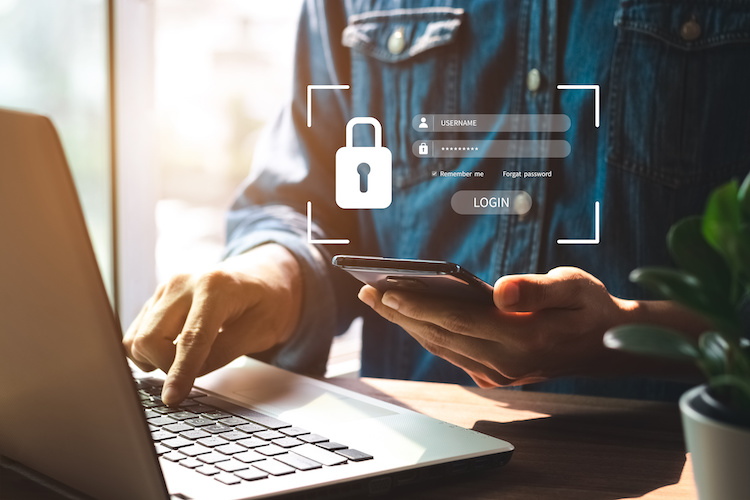
Unlocking the Power of Two-Factor Authentication: Strengthening Your Online Security
Welcome to our blog post on two-factor authentication (2FA), a powerful tool for enhancing online security. In today’s digital landscape, traditional passwords alone may not provide adequate protection against cyber threats. Two-factor authentication adds an extra layer of security by requiring a second form of verification in addition to your password. In this article, we will explore the benefits of two-factor authentication, its implementation, and best practices for leveraging this essential security measure to safeguard your digital assets.
The Power of Two-Factor Authentication
Strengthening Your Fortress: Understanding Two-Factor Authentication
Two-factor authentication, also known as 2FA, is a security mechanism that requires users to provide two different forms of identification to verify their identity. It adds an extra layer of protection, significantly reducing the risk of unauthorized access to your accounts. By combining something you know (such as a password) with something you have (such as a unique code or physical token), 2FA mitigates the impact of password-related vulnerabilities and enhances your overall online security.
Types of Two-Factor Authentication
Unlocking the Options: Exploring Different 2FA Methods
Two-factor authentication offers various methods for the second form of verification. Let’s explore some common types:
One-Time Passwords (OTP): OTPs are temporary codes generated for a single session or login attempt. They can be sent via SMS, email, or generated by authenticator apps, providing a unique code that must be entered along with your password.
Authenticator Apps: Authenticator apps, such as Google Authenticator or Microsoft Authenticator, generate time-based or event-based OTPs directly on your smartphone. These apps provide an additional layer of security, as the codes are not transmitted through traditional communication channels.
Biometric Authentication: Biometric authentication uses unique physical characteristics, such as fingerprints, facial recognition, or iris scans, to verify your identity. This method provides a seamless and convenient experience while ensuring a high level of security.
Implementing Two-Factor Authentication
Locking Your Digital Gates: Steps to Enable 2FA
Enabling two-factor authentication is a straightforward process that varies slightly depending on the platform or service you are using. Follow these general steps to implement 2FA:
Identify Supported Platforms: Determine which platforms, services, or accounts offer two-factor authentication as an option. Common examples include email providers, social media platforms, and financial institutions.
Choose Your 2FA Method: Select the most convenient and secure 2FA method for your needs. This could be SMS-based codes, authenticator apps, or biometric authentication, depending on the available options and your preferences.
Enable 2FA: Access the account settings or security settings of the platform or service you wish to enable 2FA for. Locate the option to enable two-factor authentication and follow the provided instructions to set it up.
Best Practices for Two-Factor Authentication
Fortifying Your Digital Identity: Best Practices for 2FA
To maximize the effectiveness of two-factor authentication, consider the following best practices:
Enable 2FA Everywhere Possible: Implement two-factor authentication on all platforms and services that offer it. This includes email accounts, social media profiles, cloud storage, and any other accounts containing sensitive or personal information.
Use Different Methods: If possible, use different methods for 2FA across different platforms. This adds an additional layer of security, as compromising one method does not grant access to all accounts.
Keep Backup Codes Secure: When setting up 2FA, you are often provided with backup codes. Store these codes securely in a password manager or a physical location that only you can access. These codes can be used in case you lose access to your primary 2FA method.
The Benefits of Two-Factor Authentication
Empowering Your Security: Enjoying the Benefits of 2FA
Two-factor authentication offers a range of benefits beyond enhanced security. Let’s explore some of these advantages:
Added Protection against Password Breaches: 2FA mitigates the risks associated with password breaches. Even if your password is compromised, an additional verification step ensures that unauthorized access is thwarted.
Peace of Mind: By implementing 2FA, you can enjoy peace of mind knowing that your accounts are fortified against cyber threats. It adds an extra layer of defense and reduces the risk of identity theft or unauthorized access.
User-Friendly Experience: Many 2FA methods, such as authenticator apps, provide a seamless and user-friendly experience. Once set up, the verification process is quick and convenient, ensuring a smooth login experience without compromising security.
Two-factor authentication is a powerful tool for enhancing your online security. By implementing this additional layer of verification, you can significantly reduce the risk of unauthorized access to your accounts and protect your sensitive information. Whether it’s using one-time passwords, authenticator apps, or biometric authentication, 2FA offers peace of mind, convenience, and an extra level of protection in the ever-evolving cybersecurity landscape. Take control of your digital security, fortify your defenses, and enjoy the benefits of two-factor authentication.



